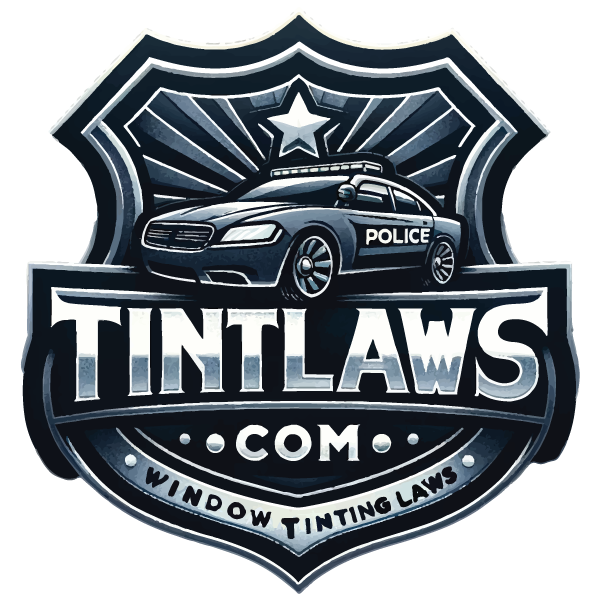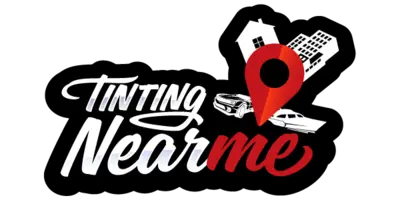2024 Connecticut Legal Tint Laws Explained
Navigating the labyrinth of 2024 Connecticut legal tint laws isn’t just about shading your ride to look cool; it’s a matter of safety, legality, and even health. You’re probably aware that these laws dictate the darkness, reflectivity, color, and even the medical exemptions for window tints in your vehicle, but do you know the specifics? Understanding these regulations can save you from unnecessary traffic violations and ensure that you’re benefiting from the maximum protection against harmful UV rays. But there’s more to it than meets the eye. Stick around and you’ll find out why.
The information on tintlaws.com isn’t legal advice; consider it a starting point. Always verify with local and state authorities, as the final decision rests with you. We are not lawyers. For specific legal guidance, we can refer you to legal experts. Remember, knowledge of both state and local laws is essential, and even law enforcement might not be fully updated. We aim for accuracy but advise double-checking for the latest regulations.
Key Takeaways
Key Takeaways
Key Takeaways
- Sedans in Connecticut must have more than 35% of light passing through their front and back side windows, while SUVs and vans only require more than 35% light transmission for front side windows.
- Tint reflection laws in Connecticut state that front side windows should not reflect more than 21% of incoming light, and back side windows should not reflect more than 27%.
- Connecticut does not have specific restrictions on tint colors, but requires a sticker to identify legal tinting on each tinted window.
- Medical exemptions for tinting are available with a VLT as low as 20% with proper documentation from a licensed physician
Connecticut Window Tint Darkness Regulations
In Connecticut, the darkest legal tint for sedans requires allowing more than 35% of light to pass through both front and back side windows, while SUVs and vans have a bit more leeway, especially for their rear windows. This differentiation in the Connecticut window tinting laws is critical for you to understand, particularly if you’re keen on customizing your vehicle’s appearance without falling foul of the law.
The Visible Light Transmission (VLT) percentage is a crucial aspect of Connecticut window tint laws. Essentially, it measures the amount of visible light that can pass through the window tint. It’s what law enforcement uses to determine whether your tint meets the legal requirements or not.
Connecticut tinting regulations for sedans stipulate more than 35% VLT for front and back side windows. Meanwhile, SUVs and vans can have more than 35% VLT on the front side windows, and any darkness can be used for the back side and rear windows. This distinction brings a bit more flexibility for larger vehicles, which can be advantageous in terms of privacy and comfort.
Yet, it’s not an open season for window tint in Connecticut. Penalties for violating tint laws in Connecticut can be steep, with fines for the first offense starting at $150 and going up to $350 for the third offense. Plus, there could be other license-related penalties and even community service requirements.
Understanding these regulations in Connecticut is fundamental to stay on the right side of the Statutes of Connecticut and avoid any unnecessary run-ins with law enforcement. So, remember to check your vehicle’s tint darkness regularly and make sure it’s within the legal bounds.
Tint Reflection Laws in Connecticut
While ensuring your vehicle’s tint abides by the Visible Light Transmission laws is crucial, you also need to pay attention to the tint reflection laws in Connecticut. Understanding these laws and regulations can help you identify legal tinting and avoid potential penalties.
In terms of side window reflection, Connecticut law stipulates different rules for sedans and SUVs. For sedans, the tint on the front side windows should not reflect more than 21% of incoming light. This limit increases slightly to 27% for the back side windows. So, if you’re customizing your sedan’s tint, you’ll need to abide by these precise percentages to ensure you’re within legal parameters.
The tint reflection for SUV and vans follows the same pattern. The tint on the front side windows must not reflect incoming light beyond 21%, and the back side windows should not exceed a reflection of 27%. This uniformity in tinting rules across different vehicle types simplifies the process of determining whether your vehicle’s tint complies with Connecticut law.
Connecticut doesn’t explicitly restrict specific window tint colors. However, it requires a sticker to identify legal tinting on each tinted window. While this might seem like a minor detail, it’s an essential part of complying with Connecticut’s tint regulations.
Violating window tint laws in Connecticut can incur fines and license-related penalties, including suspension or revocation. Therefore, understanding and adhering to Connecticut’s tint reflection laws is not just about customization—it’s about maintaining your driving privileges and avoiding unnecessary legal hassles.
Medical Exemptions for Tinting
Should you have certain medical conditions, you’re allowed under Connecticut law to apply for a medical exemption for window tinting, enabling you to use tint film with a Visible Light Transmission (VLT) as low as 20%. This Special Permit for Exemption from Tinted Window regulations is part of the 2024 Connecticut legal tint laws explained.
These medical exemptions have specific prerequisites:
- A documented medical condition that necessitates darker window tinting
- A prescription or certification from a licensed physician
- Side windows: Any darkness can be permitted if medically required
- Rear window: Any darkness is permissible if the vehicle has both left and right side mirrors in good working condition
Bear in mind, the law allows for this exemption, but legal tinting is required. Once you’ve obtained the Special Permit for Exemption, it’s necessary to adhere to the rules stipulated in it. Non-compliance with the permit’s conditions can lead to it being rescinded.
To ensure you’re in accordance with the law, remember that the level of tinted windows allowed is based on the percentage of visible light allowed through the window. The lower the percentage, the darker the tint. With a medical exemption, you can have a tint with a VLT as low as 20%, which is considerably darker than what is typically allowed.
Understanding and complying with these laws will ensure your safety on the road, as well as the safety of others. Always consult a professional if you’re unsure about any aspect of window tinting regulations.
Penalties for Tint Violations
If you’re thinking of skirting around Connecticut’s window tint laws, you might want to reconsider; getting caught with illegal tints can lead to hefty fines and even, in repeat cases, license-related penalties. The laws regulating car window tint in Connecticut are clear and specific, and the penalties for tint violations can be severe.
Under the 2024 Connecticut legal tint laws explained, the first time you’re caught with an illegal tint, you will face a $150 fine. If you thought that was harsh, a second violation ramps up the penalty to a $250 fine. Persistent disregard for the legal regulations doesn’t go unnoticed as a third offense will set you back by a whopping $350.
But the financial penalties are not the only concern. The rules also state that convictions may require the removal of the tint from your windows. This means you’ll have to bear the additional cost and inconvenience of removing the illegal tint, and potentially replacing it with a legal one.
Furthermore, if you continue to ignore these laws, you risk facing license-related penalties. This could mean having your license suspended or even revoked. Given the central role driving often plays in daily life, this is a significant and disruptive penalty.
In terms of VLT: Visible Light allowed, Connecticut has specific percentages which must be adhered to. The key is to ensure that you’re within these regulations to avoid the penalties associated with illegal tint.
Color Restrictions for Tints
Diving into the realm of color restrictions for tints, you’ll find that Connecticut’s window tint laws don’t explicitly mention any prohibitions or limitations. This means that tint colors are not explicitly regulated, offering a degree of flexibility when it comes to choosing a tint for your vehicle’s windows.
However, there are certain considerations that you should bear in mind when tinting your windows in Connecticut. Here are a few key points:
- Non-reflective tint is allowed on the windshield and front side windows. This kind of tint reduces glare and heat, improving comfort and visibility while driving.
- Any tint darkness can be used on the rear windows, but not above the manufacturer’s AS-1 line on the windshield.
- Film manufacturers need to certify the film they sell in the state. Check with your dealer to ensure the tint you choose is certified.
- There are no color restrictions for tints, but keep in mind that excessively dark or mirror-like tints can attract unwanted attention and potentially lead to issues with law enforcement.
These rules and regulations are in place to ensure that while you enjoy the benefits of tinted windows – like protection from harmful UV rays, privacy, and enhanced aesthetics – you also maintain the safety standards set by the state. Remember, it’s crucial to adhere to these standards to avoid any penalties or violations. Consulting with your dealer and understanding the laws can help you make an informed decision when it comes to tinting your vehicle’s windows in Connecticut.

How to Get Medical Exemption For Window Tint in Connecticut
Discover MyEyeRx.net, a company that streamlines the process of obtaining a medical exemption for window tint online. Explore their services to easily transform your window tint from non-compliant to legally approved!
Because of the differences in each of the 50 states, we’ve crafted distinct guides for securing window tint medical exemptions across all 50 states.

Toriano (Tory) Dewberry
Become one of the many satisfied clients Toriano has assisted in obtaining a medical exemption without stepping out of their homes. Click the button below to begin and discover if you're eligible for a medical exemption.

Toriano (Tory) Dewberry
Become one of the many satisfied clients Toriano has assisted in obtaining a medical exemption without stepping out of their homes. Click the button below to begin and discover if you're eligible for a medical exemption.
Frequently Asked Questions (FAQ'S)
What Is the Darkest Legal Tint in Connecticut?
In Connecticut, the darkest you can legally tint your sedan’s front and back side windows is 35%. For SUVs and vans, front side windows can also be tinted to 35%, but there’s no restrictions on tint darkness for the back side and rear windows. Remember, it’s important to adhere to these tint regulations to avoid any potential risks or enforcement actions. Always ensure the quality of the tint materials and the proper installation process.
Can You Be Pulled Over for Tints in Ct?
Yes, you can be pulled over for tints in CT. Police may suspect your tints exceed state law limits, affecting driving visibility. You’re then subject to a vehicle inspection. If your tints are found illegal, you’ll face traffic violations, legal consequences, and potential insurance implications. It’s crucial to understand state laws and car modification guidelines to avoid such encounters. Ensure your tint installation aligns with CT’s legal tint laws for safety and to avoid penalties.
What Medical Conditions Qualify for Window Tint Ct?
In CT, you can apply for tint exemptions if you’ve medical conditions like Lupus, Porphyria, Photosensitivity, or Xeroderma Pigmentosum. You’ll need official documentation from your physician verifying your condition’s necessity for reduced sunlight exposure. Understand the legal implications: this isn’t a one-and-done deal, there’s a renewal process. Also, remember your tint’s duration can’t exceed 20% VLT. It’s about balancing health risks with road safety.
How Dark Is 35 Window Tint?
Imagine you’re wearing sunglasses on a mildly sunny day. That’s how 35% window tint appears. It offers a balance between visibility and UV protection, ensuring safety while driving. Tint materials vary in durability and cost, so choose wisely. The installation process is meticulous, but once done, it requires little maintenance. Remember, different tint brands offer varying qualities. So, do your research before committing to one.

Tint Laws Team
Ensuring your tint is not just about style, but legality and safety.
Let us guide you through the maze of state regulations to legal clarity.

Conclusion
So, you’ve mastered Connecticut’s 2024 tint laws, a task tough enough to make a lawyer sweat. Remember, exceeding the 35% light allowance for front and back side windows could land you in hot water. Stick to the rules, and you’ll roll in style, without being a danger on the roads. With these laws, Connecticut’s not just throwing shade, it’s ensuring safety and protection from those pesky UV rays. Your ride’s never looked cooler, literally and figuratively!
Looking to find a Reputable Window Tint Company In Connecticut?
Checkout Tintingnearme.com to Find A Local Tint Shop
After learning about window tint laws, the next step is to find a trusted local window tinting shop. Our directory at Tinting Near Me offers a selection of reputable shops knowledgeable in both quality tinting and legal standards, including medical exemptions.
Choose a shop from our list for expert service that meets legal requirements and enhances your vehicle’s compliance and protection.



